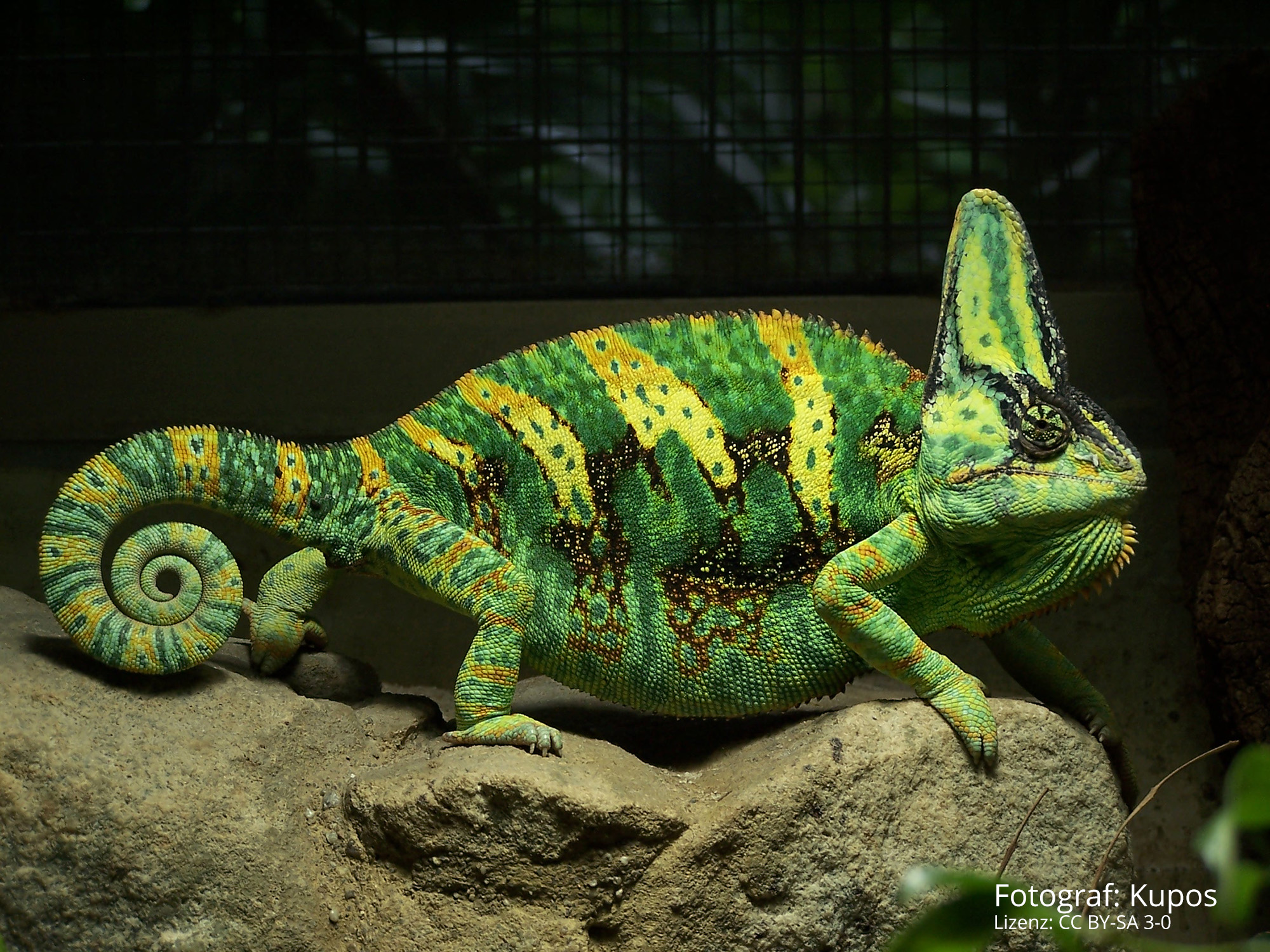After a study on sperm collection in chameleons was already published this year, further results from the largely same team of authors now follow. The aim is to further research the basics of assisted reproduction, i.e. medical assistance in reproduction, in chameleons.
At Louisiana State University, 24 Veiled Chameleons were kept under standardised conditions for over a year. All animals came from a dealer who had taken them from the population of wild Veiled Chameleons in Florida. All were kept individually in ReptiBreeze, equipped with automatic sprinklers and artificial plants. Temperatures were around 28-29°C during the day with spots to seek higher values. 12 h UV-B irradiation per day was offered. Crickets and zophobas were fed. Before the start of the study, all 24 chameleons were clinically examined and several parasite treatments were carried out. Only after a month of acclimatisation did the actual study begin.
The first experiment tested what dose of human choriogonadotropin (hCG) is needed to increase the hormone levels of testosterone in the blood by 50%. Eleven Veiled Chameleons were randomly assigned to one of three groups. The three groups received injections of 100, 200 or 300 IU hCG under the skin at two-week intervals. Blood samples were taken before the first hormone injection and at 30 minutes, one hour, two hours, four hours, eight hours, 12 hours and 24 hours afterwards.
The second experiment tested the effect of hCG treatment on sperm production. 13 Veiled Chameleons were randomly assigned to a treatment or a control group. Once a week for one month, the animals in the first group were treated with 100 IU of hCG, while the second group was only injected with the same volume of isotonic saline. After a four-week break, the groups were switched and the experiment repeated. Blood samples to measure testosterone levels were taken before treatment and on day 15 and 30 afterwards. Semen was collected by electroejaculation under anaesthesia on the day before treatment and 30 days after.
The results showed that the testosterone level in male Veiled Chameleons increased significantly directly after the administration of hCG and remained elevated for about 24 hours. However, it did not matter which dose of hCG had been given beforehand. It could also be shown that the testosterone level increased significantly after the administration of hCG compared to the control group, which only received saline solution. The number of successful electroejaculations could be increased under hCG.
Effects of exogenous human chorionic gonadotropin administration on plasma testosterone and semen production in the Veiled Chameleon (Chamaeleo calyptratus)
Sean M. Perry, Sarah R. Camlic, Michael Lierz, Mark A. Mitchell
Journal of Herpetological Medicine and Surgery 33 (3), 2023, pp. 180-191
DOI: 10.5818/JHMS-D-22-00038


